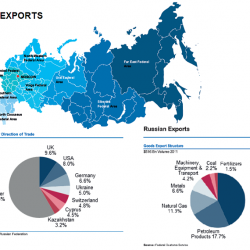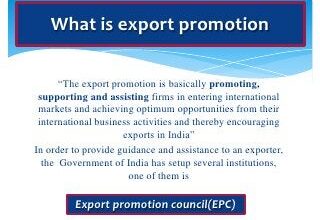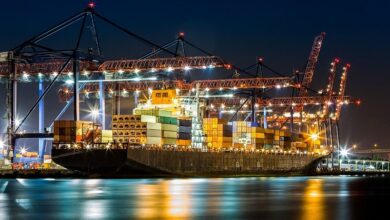Types of Russian Exports

Types of Russian Exports, Russia exports many different types of products. Oil, coal, gold, and semi-finished iron or non-alloy steel are just some of its most popular exports. Other goods it exports include cars, food, and metal products. Read on to find out more about the different kinds of commodities Russia exports. Listed below are some of the most common items that Russia exports. To understand the diversity of these products, it is helpful to think of each of them as a unique product.
Russia exports crude oil, refined petroleum oils, coal, gold, and semi-finished iron or non-alloy steel
The exports of Russia are primarily made up of hydrocarbons, solid fuels, and wheat. Russia is also a leading supplier of precious metals, such as gold, and it also imports plastics and semi-finished iron or non-alloy steel. The countries that buy Russia’s goods are China and the United States, which account for 63.3% of the country’s total global exports. Other major import markets for Russian goods include the Netherlands, Germany, and Canada.
Russia’s natural resources are worth up to US$75 trillion, according to the World Bank. As a result, the country’s imports of these commodities are vital to U.S. manufacturing. As of the end of May 2017, the country exported crude oil, refined petroleum oils, coal, and gold to more than 70 countries. The United States is also a significant importer of semi-finished iron or non-alloy steel and gold. The United States imports vehicles to Russia worth USD 2137 million annually.
It also exports metals and metal products
Russia’s exports also include metals and other metal products, and are of critical importance to many sectors. The automotive industry, for instance, is likely to face a severe shortage of raw materials due to a lack of aluminum, copper, and platinum. The automotive industry also relies on metals such as palladium, copper, and platinum to produce catalytic converters and batteries. Nickel and cobalt, which are used in the production of batteries in electric vehicles, are also important metals.
Russia is one of the world’s largest exporters of metals and has a significant market share of these commodities. Its top buyers of petroleum oils are the Netherlands and China. Its biggest buyer of precious metals and stones is the United Kingdom. Other important metals and minerals included in Russian exports are iron and steel, which are mainly exported to the United States. Taiwan also imports a significant amount of metals and metal products from Russia.
It exports cars
The Russian automobile market expanded significantly in the early 1990s, largely due to the reduction of import duties. In 1993, foreign-made cars accounted for 49% of all Russian car sales. However, the integration of Russian automakers into the market economy was immediately hit by a number of problems, including reduced financial support, increased criminal activity, and stiffer competition. In recent years, Russian exports of cars and trucks have declined significantly, but the number of imported cars has increased again.
In addition to cars, the government also exports various automotive components, such as tires and batteries. The government has also encouraged local assembly of Russian-built vehicles. However, the government must focus on diversification of its exports if the country wants to achieve its goal of selling 400,000 cars abroad by 2025. For now, Russia has limited markets for exported vehicles, and is trying to find new markets. While the government has been working on a variety of options to boost car exports, a shift to assembly kits could increase sales.
It exports food
The falling ruble and sanctions against Russia have radically changed the landscape of the Russian food industry. Both are forms of explicit and de facto protectionism. They have forced domestic producers to develop better business and production processes, which has a positive impact on the country’s food exports and domestic market. But what are the biggest barriers to Russian exports of food? The following article examines some of these challenges and suggests possible solutions. Read on to learn more about the key factors that affect Russian exports of food.
Increasing global food prices have forced Russia to restrict grain exports. In June 2020, the country’s agriculture ministry imposed an export quota on sunflower seed, rapeseed, and other crops. The halt on grain exports would exacerbate the already high food prices worldwide. And since June, the FAO Food Price Index has increased rapidly to the highest levels since 2011.
It exports energy
Russia exports energy in several forms. Oil, gas, and petroleum coke are among them. They are used to generate electricity and fuel cement kilns. Approximately two-thirds of Russian oil exports go to European countries. China is Russia’s largest buyer of oil, importing about 1.6 million barrels a day. Using clean energy is crucial for addressing climate change. But the question is how to achieve that goal.
Western sanctions imposed on Russia’s energy trade have put the country in a difficult spot. The recent invasion of Ukraine has caused a tidal wave of sanctions that threaten to disrupt the country’s energy trade with the rest of Europe. In order to keep Russia’s energy trade with the West from crashing, the country must find ways to avoid losing this export revenue. A potential solution is for the U.S. and European Union to consider the possibility of pricing its energy exports in roubles. However, this would mean a major shift in prices.
We have come to the end of our content about the Types of Russian Exports. In order to access more relevant content, please provide a search based on Google Dec




